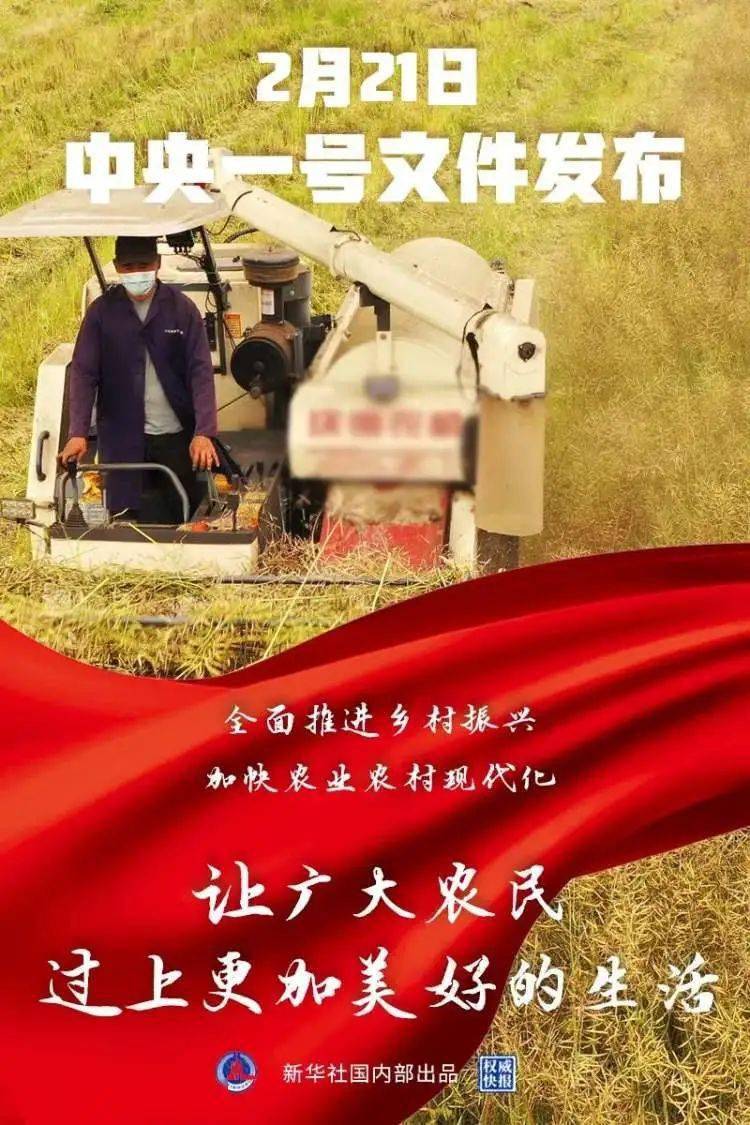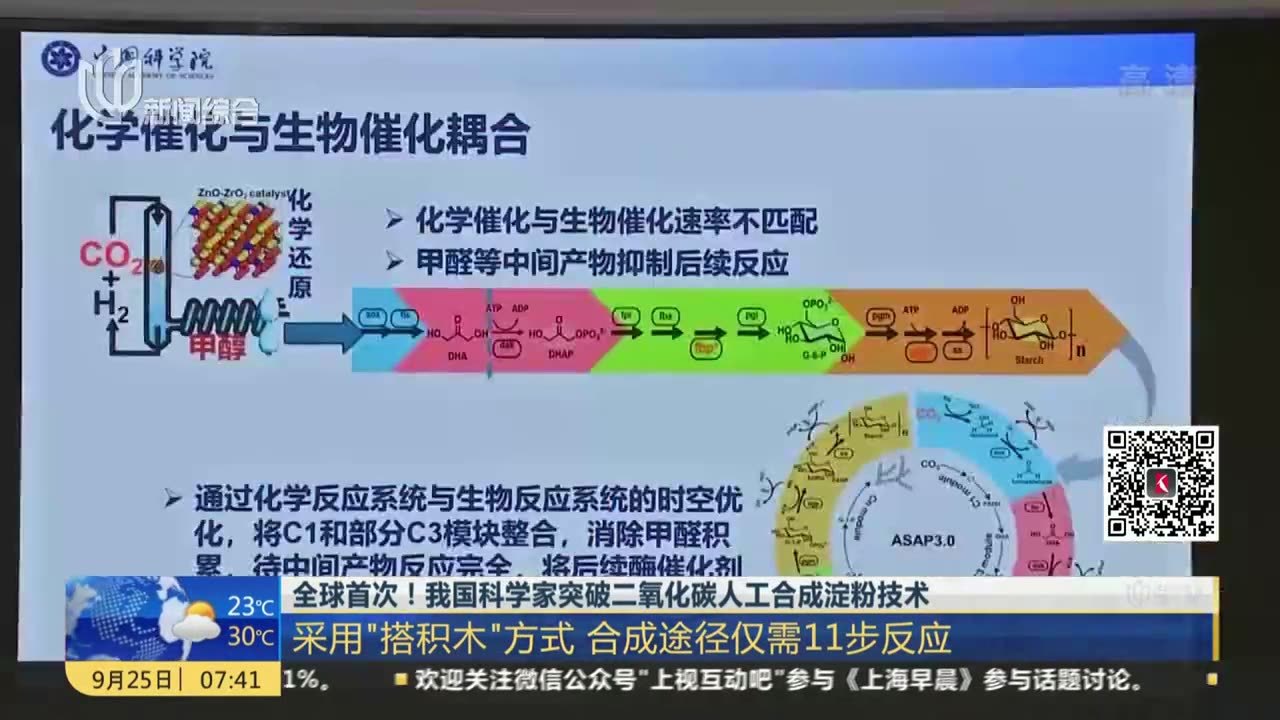杨志良,西北师范大学经济学院讲师。
摘要:中国式农业现代化是中国特色社会主义现代化事业的伟大成就之一,是中国式现代化新道路的重要组成部分。 本文通过梳理百年来中国共产党对中国式农业现代化的探索历程,将中国式农业现代化进程分为军事化农业、集体化农业、工业化农业、系统化农业四个阶段。 从演化机制、理论特征和话语构建三个维度阐释了中国式农业现代化的理论内涵。 基于此,文章以高质量发展为阶段分析,以新发展理念为逻辑引领,以构建新发展格局为根本遵循。 从加快农业数字化转型、构建现代农业经济体系、推动农业“三民融合”、打造粮食安全国际流通保障机制、建立现代农业实现共同富裕机制五个方面农业提出了有利于推进中国式农业现代化的未来路子,以期形成更高质量、更具竞争力的现代农业发展格局。
关键词: 农业现代化; 中国式农业现代化; 中国共产党; 系统农业
农业现代化是国家现代化的重要组成部分,农业现代化进程直接关系到中国特色社会主义现代化目标的进度和质量[1]。 推进我国农业现代化进程,关键是明确农业现代化的路径和方向。 在庆祝中国共产党成立100周年大会上,习近平总书记指出,我国“开创了中国式现代化新道路”。 这标志着我国在长期探索的基础上,结合中国国情,形成了与世界现代国家同步的现代化方向。 事实上,我国农业现代化也走出了一条中国式农业现代化的新道路,创造了新的农业发展理念、发展模式和发展路径。 这不仅是中国特色社会主义事业的伟大成就,也是全国人民特别是农民辛勤劳动和智慧的结晶。 在未来全面推进国家现代化进程中,中国式农业现代化必将贡献更大力量。 鉴于此,有必要从理论上回答中国式农业现代化进程中的重要问题,比如中国共产党领导下的中国式农业现代化经历了哪些阶段? 中国式农业现代化的理论内涵是什么? 新发展阶段如何选择中国式农业现代化的实践路径? 这些问题的探讨对于形成中国特色的农业现代化理论、推动农业高质量发展、加快我国农业农村现代化进程具有重要意义。
(二)社会主义革命和建设时期(1949-1978年)集体农业
社会主义革命和建设时期,为了推进我国工业化进程,新中国开始大力发展集体农业,为发展重工业积累资金。 这一时期,党的领导人正式提出了农业现代化问题。 毛泽东在《论十大关系》中指出,“用现代科学技术改造农业,用现代物质条件装备农业,是农业发展急需加强的薄弱环节,也是我国农业现代化的基本条件” ”。 发展现代农业,“一是可以更好地供给人民生活的需要,二是可以更快地增加资金积累,从而可以发展更多更好的重工业”[5]。作为党对现代化问题的认识继续深化,1964年12月,周恩来在三届一中全会《政府工作报告》中提出“四个现代化”的奋斗目标:“在一个不太长的历史时期,我们必须建设我们的国家”。建设具有现代农业、现代工业、现代国防、现代科学技术的社会主义强国”[6]。 在农业发展方式上,我国在一定程度上模仿了前苏联的集体农庄和机械化生产,吸收了军事化农业时期公有制和合作化生产的成功经验,然后通过社会主义改造,国家农业发展已转向土地公有制。 以机械化水平低、农产品统购统销为特点的集体化模式。 在农业集体化阶段,我国进行了彻底的土地革命。 小农阶层在“中农化”的基础上通过合作社、公社组织起来,最终形成了社会主义大农业格局,为我国早期工业化积累了宝贵的资本。 加快了我国工业化进程。
(三)改革开放以来农业工业化(1978-2012年)
随着我国改革开放不断推进,家庭联产承包责任制激发了小农生产力,促进了农业发展。 但生产方式落后、技术水平低仍然制约着小农户的农业经营模式。 粮食产量低、农民收入低等问题较为突出。 对此,邓小平提出:“农业的解决最终要靠生物工程、依靠尖端技术来解决……农业的发展首先靠政策,第二靠科学”。 [7]同时,还要实现“废除人民公社,实行家庭联产承包责任制”和“适应科学农耕和社会化生产的需要,发展适度农业”的“两个跨越”。规模经营,发展集体经济”[8]。由此,我国开始发展以农业机械化、化学技术为特征的工业化,对农机、农药、化肥和技术研发进行政策性补贴和激励。以农业企业、适度规模经营、合作组织、集体经济为主要组织形式的农业。但过度粗放式开发和化学化也对生态环境造成了严重破坏。为此,党中央提出农业可持续发展理念,例如党的十五届三中全会指出,要保持农业农村经济可持续发展。 发展和改善农业生态环境; 党的十七届三中全会提出建设资源节约型、环境友好型农业生产体系的目标。 现阶段,我国在以小农为主导的农业格局下,探索了能够支撑国家粮食安全、农民增收致富的产业化农业。 同时,也开始反思纯粹追求经济效益的“石油农业”所带来的生态后果。 资源破坏,从而转向可持续农业发展模式。
(四)进入新时代以来的系统农业(2012年至今)
进入新时代后,中国式农业现代化以高质量发展为导向,以实现农业多元化目标为引领,以新发展理念为指导推动系统农业发展。 党的十八届五中全会提出,加快转变农业发展方式,走产量高、产品安全、资源节约、环境友好的农业现代化道路。 党的十九大强调,要在坚决实施乡村振兴战略框架下优先发展农业农村,构建现代农业产业体系、生产体系、管理体系,健全农业农村体系。完善农业支持保护体系,发展多种形式适度规模经营,培育新型农业经营主体,完善农业社会化服务体系,实现小农户与现代农业发展的有机衔接。 此后,系统农业的内涵不断丰富,包括粮食和重要农产品供给保障高、种质资源保障有力、坚守18亿亩耕地红线、现代农业科技支撑和物质装备,构建现代农村产业和管理体系。 绿色发展是我国农业现代化的主要目标。 新时代系统农业的核心实际上是创新、协调、绿色、开放、共享的新发展理念。 强调兼顾多重目标、多元主体利益,坚持农业农村协调发展,要求建立健全现代农业体系。 尤其重要的是,扭转小农灭亡的宿命论。 可以说,系统农业是中国式农业现代化深入探索的重大阶段性成果。
二、中国式农业现代化的理论内涵
中国式农业现代化本质上是近代以来我国在国内外生存压力下被迫走上的道路。 立足本国国情和农业实际,在中国共产党的领导下,沿着中国特色社会主义道路,以农民为主体的全体人民领导。 农业的发展进步靠人民群众推动。 中国式农业现代化不是西式农业现代化,也不同于世界其他国家的农业现代化。 虽然它在世界农业现代化进程中具有普遍性,但在中国的背景下却更加具体。 其发展目标、指导思想、发展道路与世界其他国家有很大不同。
(一)中国式农业现代化的演进机制
一、农业现代化指导思想不断升华
中国共产党百年来对农业现代化的探索,总体上遵循了马克思列宁主义和马克思主义中国化原则,朝着实现社会主义乃至共产主义的目标前进,主要是为把我国建设成为社会主义强国服务的。国家。 新民主主义革命时期,没收地主土地、均等土地权利的政策,以及鼓励发展劳动互助社、消费合作社和食品合作社等,实际上是早期马列主义土地公有制思想的创新实践。和合作性。 社会主义革命和建设时期,社会主义土地国有、合作社和人民公社制度也是沿着这个思路实行的。 这些历史实践为革命的胜利和我国工业化的早期积累作出了重大贡献。 但人民公社等农业合作社的激进发展,也导致我国农业现代化道路的探索一波三折。 改革开放后,集体土地所有制下的家庭联产承包责任制取代了早期的合作社、人民公社等合作组织,中国特色社会主义市场经济逐渐成为农业发展的主导力量。 同时,我们开始探索适度规模经营,持续加大对农药、化肥、生物技术等先进生产要素和水利工程建设的投入。 进入新时代后,新发展理念指导下的中国特色社会主义乡村振兴和农业高质量发展、小农回归和长期生存等思想升华了思想。引领我国农业现代化进程进入中国特色新时代。 社会主义农业现代化思想。 回顾百年历史,我们可以发现,我国农业现代化进程本质上是由中国共产党农业发展指导思想驱动的,并且随着指导思想的不断升华,中国式农业现代化路径已逐渐成熟。
2、大国小农生产力和生产关系不断升级。
百年来我国农业现代化最显着的特点之一就是小农农业生产方式发生翻天覆地的变化。 小农农业生产方式的变化是生产力提高引起的,这种变化促进了生产关系的转变。 升级。 正如马克思指出的:“人们随着新的生产力的获得,改变了自己的生产方式,而随着生产方式的改变,也就改变了一切经济关系,而这些经济关系只不过是这种特定生产方式的必然关系。” [9]从新民主主义革命时期到新时代,我国小农生产力大体经历了四个阶段:人力为主、人力机械为主、机械化工为主、机械为主。 、化学品、生物技术和数字技术为主。 迭代升级阶段。 在这个过程中,小农的生产关系逐渐变得更加复杂,从早期简单的小农关系,到社会化的合作关系,到家庭联产承包责任制下的社会主义市场经济关系,最后到新时代的农业生产关系。农村关系。 生产关系系统化。 随着我国农业生产力和生产关系不断从落后简单向先进复杂升级,中国式农业现代化才能不断前进。
三、农业发展持续由国家战略需求驱动。
我国作为马克思主义政党领导的社会主义国家,最典型的制度特征就是党、政、军、民、全国一体化。 举国体制下的国家战略是我国经济社会发展的重要内生动力。 百年来我国从站起来、富起来到强起来的各个阶段,农业除了满足人民群众的基本生活需要外,主要是党和国家重大战略需求带动的。 它在每个阶段发挥着特殊的功能,并由统一的功能逐渐扩展到多元化的功能。 具体来说,新民主主义革命时期,在革命战略的推动下,农业的主要功能是辅助革命战争; 社会主义革命和建设时期以工业化转型战略为主,农业发展成果主要用于积累资本。 促进重工业发展; 改革开放后,在以经济建设为中心的战略引领下,农业在国民经济中的比重逐渐下降,农业发展回归本源。 一方面,为人民群众提供了充足、多样化的农产品供给; 另一方面,促进农民收入增长,实现二元经济下农业与工业、农村与城市的协调发展; 进入新时代后,乡村振兴战略和生态文明建设成为农业发展的主基调,农业担负着推动乡村振兴和生态环境保护的主要任务。 纵观100年来农业功能变迁,国家阶段性战略需求推动农业功能不断转变、逐步拓展,从而加快了中国式农业现代化的发展进程。
(二)中国式农业现代化的理论特征
一、政治特点:坚持党的领导
在中国特色社会主义制度框架内,中国共产党的集中统一领导是推进中国特色社会主义现代化建设的基础和本质要求。 中国式农业现代化的稳步推进,也离不开党的领导。 无论是现代农业发展的战略和方向,还是促进现代农业发展的政策措施,都要坚持党的决策指导,立足全国、全局。 只有按照党的领导发展的现代农业,才是沿着正确历史方向前进的现代农业,才是中国特色社会主义现代农业,才能服务于建设中国特色社会主义强国。 因此,听从党的领导是中国式农业现代化最基本的理论特征。
2、经济特点:长期生存的小农家庭经营
“大国小农”一直是我国的基本国情和农业国情。 根据第三次农业普查数据,我国小农数量占农业经营主体的98%以上,小农从业人员占农业从业人员的90%,小农户经营的耕地面积小农户占耕地总面积的70%[10]。 然而,在小农消亡的宿命思想影响下[11],我国长期以来将小农视为亟待转型的落后经营主体。 党的十九大后,我国开始认识到小农长期存在及其在农业农村发展中的主体地位,强调小农与现代农业发展的有机联系。 这意味着小农将长期成为农业农村发展的主力军,参与推动我国农业现代化进程。 未来,小农不仅不会消失,还将成为与农业现代化同步发展的现代小农。
3、文化特征:农耕文明的基因传承
我国自古以来就是以农业立国的。 在万年农耕历史和畜牧业生产生活过程中,我们积累了中华民族独特的传统农耕文化[22]。 这些农耕文化源远流长,逐渐渗透到中国人民的日常生活中,成为密不可分的文明基因。 中国式农业现代化,预示着我国宝贵的传统农耕文明基因将不断传承,农耕文化将借助现代农业再次弘扬,乡村文化振兴指日可待。 在未来现代农业的发展中,传统农耕文化中包含的传统节日、民俗风情、民族文化、手工艺等将成为现代农业和乡村旅游的核心内容。 节气、季节、循环农业等传统农业积累的生产智慧将继续应用于现代农业。 农耕文化中所蕴含的道家与自然、和谐共处的哲学思想,农耕、读书家传、互助互助的伦理价值观,以及勤奋、勇敢、自强的优秀品质将取之不尽、用之不竭。为未来社会发展提供文化资源。

4、社会特征:粮食安全是社会“稳定器”
作为解决我国14亿人口吃饭问题的主要途径,发展现代农业在社会发展进程中发挥着重要的基础性作用。 在中国式农业现代化背景下,粮食安全不仅是经济问题,也是社会问题。 我国把保障粮食安全作为确保社会稳定的根本出路。 尤其是在面临重大灾害时,粮食安全作为社会稳定器的作用往往更加凸显。 因此,与世界上许多国家粮食供应依赖对外贸易不同,我国强调粮食供应主要依靠国内生产,以确保“中国人民的饭碗牢牢掌握在自己手里”[13]。 高度重视粮食安全,是中国式农业现代化的特色,是中国特色社会主义行稳致远的基础。
5、生态特色:生态农业发展
习近平新时代中国特色社会主义思想的生态文明建设、绿色发展理念和“两山论”从根本上奠定了中国式农业现代化的生态绿色基调。 中国式农业现代化从西式石油农业转向生态农业,从单纯注重生产效率转向兼顾生产效率和生态效率,强调农业发展的安全性、可持续性和生态屏障功能。 特别是把农业生态作为农业高质量发展的目标,通过农产品生产过程的绿色化提高农产品质量和竞争力,农产品绿色有机标签成为衡量价值的重要指标农产品与农业乡村旅游、休闲体验等相结合,形成集一、二、三产业于一体的综合生态产业体系。
(三)中国式农业现代化的话语建构
一、以人为本的农业现代化
经过一百多年的艰苦探索,中国式农业现代化逐步从服务革命事业和工业化转向服务农民自身和乡村振兴,始终遵循为人民服务、以人民为中心的本质。 一方面,中国式农业现代化是中国特色社会主义在农业领域的具体实践,而中国特色社会主义的出发点和落脚点是以人民为中心,因此中国式农业现代化的基础是以人为本。 另一方面,中国共产党的领导是中国特色社会主义最本质的特征[14]。 中国共产党来自人民、植根于人民,始终坚持一切为了人民、依靠人民[15],中国式农业现代化是中国共产党推动的重要事业之一。共产党是为人民谋福利的。 中国式农业现代化以人民为中心的话语建构具体体现在两个方面:一是绝对的粮食安全。 粮食安全是国之根本,人民之期盼。 党和国家始终把保障人民群众丰衣足食作为首要任务。 中国式农业现代化的主要目标是实现绝对的粮食安全,依靠自主力量保证老百姓吃饭没有问题。 二是农民是主体。 推进中国式农业现代化始终依靠农民的力量,以农民为主体,以帮助农民增收为手段,以促进农民全面发展为目的。 任何时候,农民始终是农业生产的主体,农业发展成果的分配必须始终向农民倾斜。 事实上,绝对的粮食安全和以农民为主体的以人民为中心的中国式农业现代化话语,是中国特色社会主义道路的特征,也是中国特色社会主义制度优势的体现。
二、以共同富裕为目标的农业现代化
共同富裕是社会主义的本质要求,是中国共产党对全体中国人民的承诺,是中国特色社会主义现代化建设的鲜明特征[16]。 农业是农民增收的基础产业,农民是共同富裕道路上的后来者。 农民能否与全体人民共同富裕,主要取决于农业能否实现现代化。 一是中国式农业现代化遵循共同富裕的目标,推动传统农业改造,提高农业生产效率,增加农民收入,缩小农民与其他群体的收入差距。 其次,中国式农业现代化不同于以资本逐利为主导的资本主义农业现代化。 要求农业现代化成果由全体人民共享,包括全国农业科技推广、全国主要农产品供给协调、农业经营收入分配向农民倾斜等。 第三,中国式农业现代化强调农村脱城、工业兴农。 要求反馈农民、农业和农村在工业化、城镇化初期的贡献,实现城乡、工农业关系的长效协调,促进农民共同富裕。城市和农村地区。
三、农业现代化与农村现代化相协调
在传统的二元结构下,城市和农村各走自己的道路,走向不同的现代化道路。 在城市化快速扩张的同时,农村却呈现出逐渐衰落的趋势。 但把中国特色社会主义乡村振兴作为实现民族复兴的重大任务提出来。 正如习近平总书记指出的,“民族要振兴,乡村必须振兴”[17]。 在这一目标指引下,农业现代化和农村现代化成为推动乡村振兴的两个根本抓手。 更重要的是,乡村振兴战略强调,必须统筹设计和推进农业现代化和乡村现代化,以农业现代化推动乡村现代化,以乡村现代化助力农业现代化,把提高农业效率和强农有机结合起来。治理。
四、强调人与自然和谐共处的农业现代化
my country's traditional agriculture has long adopted the production and management model of "depending on the sky for food", and humans and nature have basically realized the harmonious symbiosis of "the unity of nature and man". Western-style agricultural modernization contains anti-natural bullying, and the relationship between man and nature has been seriously alienated [18]. This determines that capitalist agricultural modernization is highly dependent on mechanized and chemical production methods, and overemphasizes natural resources. The utilization and improvement of agricultural economic benefits have led to serious damage to the ecological environment due to agricultural development. Chinese-style agricultural modernization inherits our country's traditional agricultural development wisdom, takes into account agricultural development benefits and ecological environment protection, emphasizes the appropriateness and sustainability of agricultural utilization of natural resources, and follows the ancient Chinese adage of “taking and giving according to the measure of heaven and earth.” [19]。 At the same time, attention is paid to the introduction of modern production factors such as machinery, fertilizers, pesticides, and advanced technology, thereby promoting the synergy between agricultural economic benefits and ecological environmental protection, and truly realizing the harmonious symbiosis between man and nature.
3. The future approach to promoting Chinese-style agricultural modernization in the new development stage
After achieving the first centenary goal, our country has entered a new journey of building a modern socialist country in an all-round way and a new stage of development towards the second centenary goal. In the new stage of development, agricultural modernization faces complex international and domestic situations, and various challenges and opportunities coexist. Our country must implement new development concepts, build a new development pattern, adhere to the party's leadership in agricultural modernization, and be guided by the socialist agricultural development thought with Chinese characteristics, strive to improve agricultural productivity, give full play to the diverse functions of modern agriculture, and develop people-centered and promote Modern agriculture that promotes common prosperity, coordinates agricultural and rural modernization, and harmonious coexistence of man and nature will continue to follow the path of Chinese-style agricultural modernization.
(1) Adhere to agricultural innovation and development and promote agricultural digital transformation
The promotion of Chinese-style agricultural modernization must adhere to innovation and development, and should leverage the new engine of the digital economy to accelerate agricultural digital empowerment and promote agricultural digital transformation. First, build a digital agricultural infrastructure system, vigorously promote digital rural construction projects, improve rural space-based facilities, and build a data resource sharing platform; secondly, promote the development of smart agriculture, implement farmers' digital information technology improvement actions, and innovate agricultural information technology service methods. Improve the information technology level of farmers; finally, develop agricultural e-commerce, accelerate the smooth flow of rural logistics, build an agricultural e-commerce platform, and support the development of the agricultural internet celebrity economy.
(2) Adhere to the coordinated development of agriculture and build a modern agricultural economic system
Chinese-style agricultural modernization must adhere to the coordinated development of agriculture and lead agricultural modernization with systematic thinking. Build an agricultural industry system, production system, and management system, improve the sustainability and resilience of the agricultural economy, and build a modern agricultural economic system. First, promote the intensive processing of agricultural products and the integrated construction of the industrial chain, increase the production of derivatives and quality, branding, and online marketing, and promote the extension of the agricultural industrial chain and added value; secondly, increase investment in agricultural science and technology research and development, and cultivate a large number of high-quality Recruit cutting-edge agricultural science and technology talents, establish an agricultural science and technology industry-university-research cooperation system, and fight for the turnaround of seeds. Research and develop high-efficiency biopesticides, organic fertilizers, and modern agricultural machinery to fight for the turnaround of seeds. Finally, explore the agricultural cluster development model and develop agricultural social enterprises. Promote leading agricultural enterprises, cooperatives, large planting and breeding households, and small farmers to form industrial alliances and communities of interests, improve the agricultural socialization service system and policy support and protection system, and promote the coordinated development of industrialization between small farmers and new business entities.
(3) Adhere to the green development of agriculture and promote the “integration of three livelihoods” in agriculture
Chinese-style modern agriculture emphasizes the organic coordination of production, life, and ecology, and pursues the realization of a green "three-life integration" in which humans and nature coexist harmoniously. First of all, efforts should be made to promote agricultural technological innovation, increase farmers' income, and protect the ecological environment. Focusing on the main line of agricultural supply-side reform, we should guide industrial agglomeration and localization, cultivate and develop agricultural specialty industries and leisure agriculture, promote the development of agricultural functional zoning, and implement Agricultural carbon emission reduction actions; secondly, increase the cultivation of agricultural human capital, strengthen the comprehensive management of rural living environment and environmental pollution, improve the supply of rural public goods, accelerate the green transformation of agricultural production methods and farmers' lifestyles, and effectively promote ecological industrialization , so that the "three livelihoods" spatial pattern is more optimized, resource utilization is more efficient, and social benefits are improved faster; thirdly, the comprehensive agricultural industry is developed to give full play to the multiple functions of modern agricultural product production, economic growth, ecological protection, and cultural inheritance, so that The relatively single economic value of agriculture has been transformed into multiple values such as economic, social, political, ecological, and cultural, thereby contributing greater effectiveness to promoting rural revitalization.
(4) Adhere to the open development of agriculture and create an international circulation guarantee mechanism for food security
The promotion of Chinese-style agricultural modernization must adhere to the concept of open development, be based on the new "dual cycle" development pattern, closely link the domestic market with the international market, and ensure absolute food safety and basic grain self-sufficiency by creating an international food security system. The circular guarantee mechanism uses the international market to achieve food diversification and low-cost imports to improve food security capabilities. Specifically, first of all, make good use of the value spillover from international grain trade, take into account the development interests of domestic grain-producing farmers, actively participate in and lead international food security and food inequality governance issues, participate in building an open international grain trade market, and realize the international grain market. Smooth circulation, thereby increasing China's food supply through food import and export trade, adjusting China's food production and consumption structure, and easing food security pressure; secondly, taking advantage of China's huge food consumption market, actively lead the construction of global food trade rules, and lead the construction of global food trading platform, strengthen the role of grain futures in the international trade of agricultural products, and effectively manage and control risks in the international grain futures trading process; finally, strengthen food security cooperation between China and countries along the “Belt and Road”, with the help of the “Belt and Road” infrastructure and land seaports, build grain trade distribution centers for countries along the Belt and Road, encourage leading domestic grain companies to strengthen stable grain trade relations with countries along the Belt and Road, and establish new "Belt and Road" grain trade channels through technology sharing, industrial investment, tariff preferences, etc.
(5) Adhere to the shared development of agriculture and establish a mechanism to realize common prosperity in modern agriculture
The key to Chinese-style agricultural modernization with the goal of achieving common prosperity is to be oriented towards shared development, tilting the distribution of agricultural development results more towards farmers and rural areas, and emphasizing the benefits to farmers and rural areas on the basis of ensuring the basic returns of industrial and commercial capital. Promote and help to effectively increase the income of farmers, especially the relatively poor groups, to achieve increased income and get rid of poverty, and keep pace with the common prosperity of rural areas and urban and rural areas. Therefore, we must adhere to the shared development of agriculture and establish a mechanism to realize common prosperity in modern agriculture. First of all, establish a shared interest linkage mechanism between farmers and industrial and commercial capital, increase support and cultivate multiple interest linkage mechanisms such as "company + farmer", "company + cooperative + farmer", "company + base + farmer", and improve the stability of the interest linkage mechanism. , poverty alleviation ability, and risk resistance ability, with special emphasis on the benefit-sharing mechanism for farmers, encouraging enterprises to assume social responsibilities, and strengthening the policy orientation of driving industrial and commercial capital to help farmers become rich; secondly, vigorously implement vocational and technical training for farmers, and establish a government A training system that closely collaborates with departments, colleges and universities, scientific research institutes, enterprises, and cooperatives to increase investment in farmers' vocational and technical training, and provide farmers with information through short-term training courses, village-based publicity, expert compounds, and college-style training. Transfer technical knowledge at close range to improve farmers' self-development and wealth-making abilities; finally, innovate and develop the agricultural collective economy, encourage more farmers to participate in agricultural collective operations, use advanced technologies and elements to improve collective economic production efficiency, innovate the collective management system, and adhere to the Party's Under the premise of leadership and collective ownership, we should reasonably formulate a decision-making mechanism that combines democratic decision-making and capable people's decision-making, establish an income distribution system that focuses on distribution according to work and is compatible with incentives, and drive farmers to achieve common prosperity through a highly efficient collective economy. 。

 微信扫一扫打赏
微信扫一扫打赏
 支付宝扫一扫打赏
支付宝扫一扫打赏


